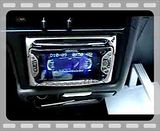haromaster87
Active Member
Okay guys,
So my nephew is all into ridiculous, terrible sounding, thumping car stereo's. No offense if anyone likes those style systems, just not my style. Anyway, I've looked at a lot of components they use and I see them using 1000w amps and things of the sort. Then he ask about my Hi-Fi rig and I tell him it makes about 27 watts per channel. Yet my little Pioneer CS-77's make A LOT of noise and great bass response, etc. I guess my question is, why do they use so much more power? I mean, I know they have home receivers that made, 300+wpc, but those were known as monster receivers and powered large speakers, I presume. Is there some technical difference between everything, or is the wattage rating more of a bragging medium, or what? I know this is a dumb question that ignores a lot of specifics, but I think someone will get what I mean. Btw, if there's any car audio guys, I'm not trying to offend anyone, just curious.
So my nephew is all into ridiculous, terrible sounding, thumping car stereo's. No offense if anyone likes those style systems, just not my style. Anyway, I've looked at a lot of components they use and I see them using 1000w amps and things of the sort. Then he ask about my Hi-Fi rig and I tell him it makes about 27 watts per channel. Yet my little Pioneer CS-77's make A LOT of noise and great bass response, etc. I guess my question is, why do they use so much more power? I mean, I know they have home receivers that made, 300+wpc, but those were known as monster receivers and powered large speakers, I presume. Is there some technical difference between everything, or is the wattage rating more of a bragging medium, or what? I know this is a dumb question that ignores a lot of specifics, but I think someone will get what I mean. Btw, if there's any car audio guys, I'm not trying to offend anyone, just curious.


